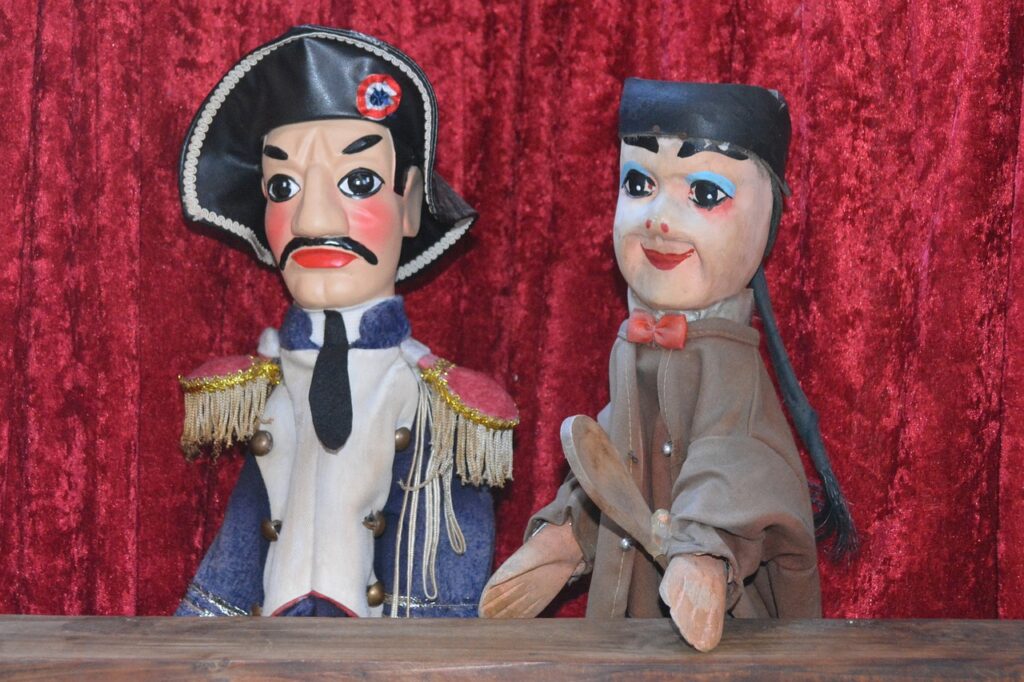Fascinating Tales And Storytelling Magic Within The World Of Puppeteering
- KKadmin
- Feb, 21, 2024
- Education
- No Comments
Puppetry is one of the most ancient and versatile forms of performance and storytelling. Its appeal spans cultures and has persisted through centuries, continually reinventing itself to captivate audiences of all ages. Scott Biski will explore the rich and fascinating world of puppeteering, exploring its origins, techniques, and impact on global storytelling.

History of Puppeteering
Puppetry finds its roots in the mists of time, with evidence of puppet-like figures dating back to ancient Egypt. Initially, puppets likely served religious or ceremonial purposes before evolving into a vessels for entertainment and storytelling. Puppetry has retained its cultural significance throughout history, from Chinese shadow plays to the classical Balinese wayang.
Over the years, puppetry techniques have seen remarkable evolution, influenced by advancements in materials, the invention of new mechanisms, and cross-cultural exchanges. These developments have led to many puppet styles, each with its ability to convey the puppeteer’s narrative.
Types of Puppets
Hand Puppets: Hand puppets are among the most accessible and popular forms of puppetry. Operated on puppeteer’s hands, they often feature movable mouths, simple limbs, and a wide-eyed, expressive appearance. Characters like the iconic “Punch and Judy” and “Sesame Street” Muppets have made the hand puppet a staple of the puppetry world.
Marionettes: Marionettes, or string puppets, are manipulated by strings or wires. This style demands a high skill level from the puppeteer—who must control multiple strings and often provide movement mimicking the human form. The marionette’s ability to perform complex movements and dance-like gestures endows it with a graceful, almost magical quality.
Shadow Puppets: Chinese and Javanese shadow puppetry is perhaps the most renowned shadow play tradition. This ancient style often uses intricately cut leather figures to cast silhouettes on a thin screen, with lanterns or other light sources creating drama and spectacle that is as captivating as it is evocative.
Rod Puppets: Rod puppets are supported and manipulated by rods from below. This technique allows for a greater range of movement and complexity in puppets—making them ideal for narrative scenes or more elaborate character animation. European traditions, such as the renowned “Czech Marionette Theater,” have kept the art of rod puppetry alive and vibrant.
The Art of Puppeteering
Behind the enchantment of puppet shows lie the intricate workings of puppeteers. Each movement, each gesture, and each line of dialogue is meticulously crafted to bring out the fullest potential of the puppet as a storytelling tool.
The manipulation of puppets requires a delicate balance of control and sensitivity. Whether it’s the swift, playful hops of a hand puppet or the graceful sways of a marionette, each movement must be thoughtfully orchestrated to communicate the character’s intentions and emotions.
In puppetry, the voice is as much a part of the character’s identity as its physical form. Puppeteers develop a range of voices and tones to embody different characters, often combining these vocalizations with the puppet’s movement to create a seamless and believable performance.
Puppeteering is not just about the puppets; it’s about the world they inhabit. Stagecraft and set design are integral to creating an immersive environment that complements the storytelling. From the elaborate sets of marionette theaters to the minimalist backdrops of shadow plays, every detail is carefully crafted to enrich the visual narrative.
Puppetry in Modern Theater and Performances
As puppetry continues to evolve, it has found new life in modern theater and performances. Contemporary shows like “War Horse” and “Avenue Q” have pushed the boundaries of traditional puppetry, using innovative techniques to create captivating spectacles that blend live performance with puppetry seamlessly.
Puppetry has also made its way into film and television, with productions like “The Muppets” and “Sesame Street” showcasing the enduring charm and versatility of puppets on screen.
The Magic of Puppetry in Storytelling
At its core, puppetry is a powerful form of storytelling. Through the artful manipulation of puppets, puppeteers can transport audiences to far-off lands, evoke deep emotions, and weave intricate tales. The physicality and expressiveness of puppets allow for a unique connection between the audience and the characters, drawing viewers in and inviting them to suspend their disbelief.
Final Thoughts
Puppeteering is a timeless art form that continues to capture the hearts and imaginations of people worldwide. From its ancient origins to modern-day performances, puppetry remains a vibrant and ever-evolving medium for storytelling, entertainment, and cultural expression. As we continue to push the boundaries of this magical craft, one thing remains certain: the enchantment of puppetry will continue to captivate audiences for generations to come.
Recent Posts
- Building a Customer-Centric Business: Strategies for Enhancing Satisfaction and Loyalty
- The Growth Of Indoor Skydiving: A Thrilling Alternative For Adrenaline Junkies
- Fascinating Tales And Storytelling Magic Within The World Of Puppeteering
- Studying for Your Behavioral Science Degree? Key Concepts to Master
- Score High Marks: Tools and Tips for Online High School Success